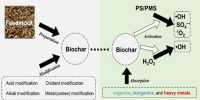Scientists at the University of Pennsylvania began developing a supertrong but reverse adhesive. For inspiration, they saw nothing more than the natural world, reporting in the journal Proceedings of the National Academy of Sciences.
With some help from our disgusting, shielded friends, the humble snails, scientists have created naughty sticky superglue that is strong enough to hold a man from a roof with just a stamp-shaped patch. After all, like a gecko creeping across a wall, it is reversed and can be switched on or off as needed.
Mollusks, most notably snails and slugs, are able to stick to surfaces thanks to the spherical mucus they produce.
This allows the animal to move as well as only the right level of stickiness, in its wet form. However, once hardened, the mollusk can attach itself to any surface for a long time.
While exploring this type of material, a member of the research team came across a hydrogel made of a polymer called polyhydroxy ethyl methacrylate, abbreviated as PHEMA, which was rubber when wet but rigid when dry. In this case, its retrograde is controlled by water. Further investigations by PHEMA have cemented its place as the ideal candidate. If applied to a surface in its wet state, it spreads to other photos as the material dries and spreads to small cracks and cavities of different sizes, which leaves them prone to peeling.
Lead author Shu Yang, a professor in the Department of Materials Science and Engineering and in the Department of Chemical and Biomolecular Engineering, said in a statement, “These are like childhood toys that you throw on the wall and they stick because that’s why they’re so soft. Imagine a plastic sheet on a wall; it comes easily.
But squishy things will fit in the holes.”
Yang said, “When the materials dry, they usually shrink. If it shrinks from the surface, it no longer wants to conform to the microcavities and it’ll pop out.” “Our femur glue doesn’t pop out. It stays dry. It remembers the shape even though it’s dry and inflexible.”
Obviously, you don’t want to build a house or a car with these things, because rain will do little for its comfort, but researchers say that an adhesive component, including water-activated reversible, can be used in scientific research and medicine. Meanwhile, scientists are also looking for other adhesives that, whether chemical and pH or light and heat, can react in reverse signals.














